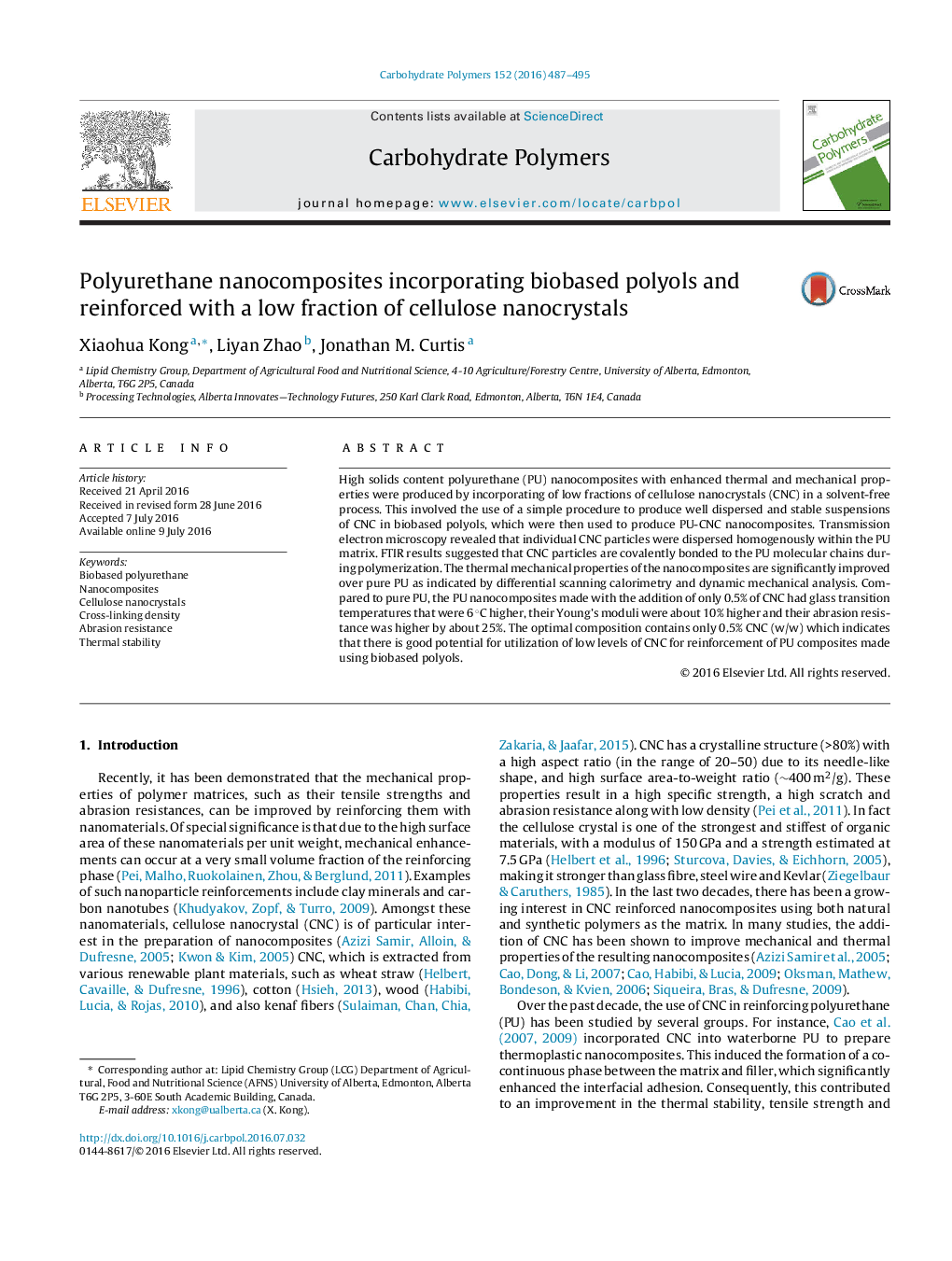| Article ID | Journal | Published Year | Pages | File Type |
|---|---|---|---|---|
| 1373667 | Carbohydrate Polymers | 2016 | 9 Pages |
•A method was developed to achieve well dispersed stable polyol-CNC suspensions.•CNC particles were dispersed evenly within the host PU matrix as revealed by TEM.•The polyol structure played an important role for such uniform CNC distribution.•Thermal and mechanical properties of PU-CNC nanocomposite increased significantly.
High solids content polyurethane (PU) nanocomposites with enhanced thermal and mechanical properties were produced by incorporating of low fractions of cellulose nanocrystals (CNC) in a solvent-free process. This involved the use of a simple procedure to produce well dispersed and stable suspensions of CNC in biobased polyols, which were then used to produce PU-CNC nanocomposites. Transmission electron microscopy revealed that individual CNC particles were dispersed homogenously within the PU matrix. FTIR results suggested that CNC particles are covalently bonded to the PU molecular chains during polymerization. The thermal mechanical properties of the nanocomposites are significantly improved over pure PU as indicated by differential scanning calorimetry and dynamic mechanical analysis. Compared to pure PU, the PU nanocomposites made with the addition of only 0.5% of CNC had glass transition temperatures that were 6 °C higher, their Young's moduli were about 10% higher and their abrasion resistance was higher by about 25%. The optimal composition contains only 0.5% CNC (w/w) which indicates that there is good potential for utilization of low levels of CNC for reinforcement of PU composites made using biobased polyols.
